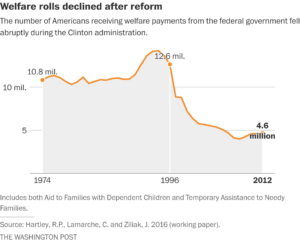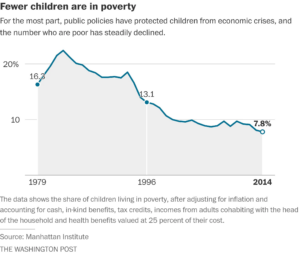CTUP cofounder Steve Moore testified yesterday before the House Education and Workforce Committee this week on how to get Americans back to work by reforming welfare. In 1996 President Bill Clinton signed a historic bipartisan welfare reform (with the help of then-Speaker Newt Gingrich) requiring work and installing time limits for benefits.
Here were the results according to Brookings Institute scholar and one of the chief architects of that bill, Ron Haskins:
1. Caseloads declined rapidly:
Between 1994 and 2004 the caseloads declined by 60%. The number of families receiving cash benefits hit the lowest level since 1969, and the percentage of children on welfare was the lowest since 1970.

2. Welfare recipients went to work:
“40 studies conducted by states since 1996 show that about 60 percent of the adults leaving welfare are employed at any given moment and that, over a period of several months, about 80 percent hold at least one job.”
3. Record reduction in child poverty
“Between 1994 and 2000, child poverty fell every year and reached levels not seen since 1978… By 2000, the poverty rate of black children hit the lowest level ever recorded.” The increase in total income [from work] accounted for this improvement.

4. More than $50 billion likely saved
According to CBO, the budget savings exceeded $50 (or closer to $100 billion in today’s dollars).
The bottom line: The pattern [from welfare reform] is clear, earnings up, welfare down.
